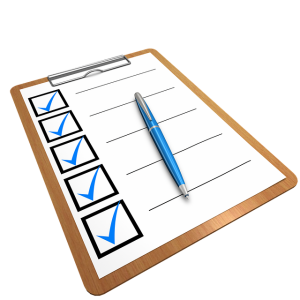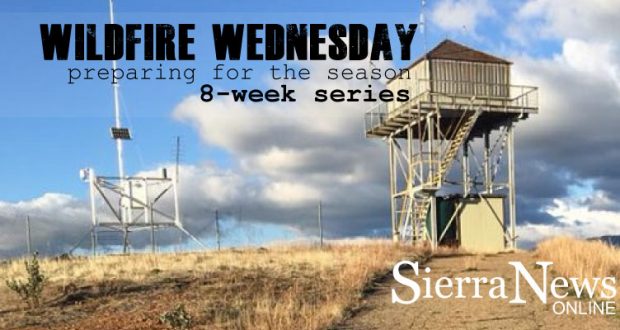This is the seventh in a series of articles SNO will be doing called “Wildfire Wednesday.” To begin, there will be eight articles presenting “The 12 Step Guide to Help Plan in Advance for Evacuation.” This guide was put together by Katie Hepler and the members of the California Fire Support Group on Facebook. The California Fire Support Group is “intended to allow collaboration between those who have been through the fire and recovery process, and those who want to be prepared or are currently experiencing a fire.” Katie Hepler got involved in wildfire relief and recovery in 2015 when the Butte Fire devastated the community of Mountain Ranch and Calaveras County.
MOUNTAIN COMMUNITIES — Wildfire season is just around the corner and being prepared is vital for keeping your family and community safe. Following is Steps 9 and 10 from “The 12 Step Guide to Help Plan in Advance for Evacuation.” This guide was put together by those who have experienced evacuations firsthand. The guide is set up in a way that encourages you to do the work now, ahead of time, so that if and when you need to evacuate, you will be able to do so quickly and safely.
STEP 9
Prioritize Belongings & Make a List
Okay, so you’ve got everything you need to get everyone out safely at a moment’s notice. But what if you have more time? What if you have a few hours? Or a couple days to prep? All of these scenarios are possible. You can be near the start of an incident, or miles away where it reaches you a few days later. Wherever you land on the spectrum, NEVER WAIT TO PACK AND GO. The odds of getting everyone out safe and keeping as many memories as possible are better the sooner you start the process.
Start with a list of your ‘obvious’ items that you will need that you are likely to carry on your person. You would think there’s no way you could forget these things, but in an emergency it is possible. Some things you may want to include on this list are:
- Go bag(s)
- Household binder
- External hard drive (if it’s not in your household binder)
- Car keys
- Cell phone
- Pet #1
- Pet #2
Next, make a list of your irreplaceable items that you would be upset to be without. This may vary from person to person, but here are some general ideas for priority items:
- Family heirlooms
- Photographs/photo albums
- Bible
- Jewelry
- Specific collections
- Antiques
- Special gifts
I would then suggest making a secondary list of items you’d really like to take, but that don’t meet the same standard as those in your list above. This will allow you to prioritize your most prized items, space and time if it comes down to it. Some examples for this secondary list may include:
- Extra clothing
- Computers
- Diplomas
- Artwork
- Christmas ornaments
- Firearms
Feel free to make as many subsequent lists as you need or want to rank and organize the additional items you’d like to take in the event of an evacuation.
Where are your items?
Now that you have your lists of items. Where are your items right now? Did you do STEP 5 or skip it? Did you already know where they were without organizing? Regardless, with your list, let’s note WHERE the items live in your home and if you have more than one. For example:
Family photo albums: living room, bookshelf, bottom shelf (5)
Grandma’s baby book: Mom’s office, desk, drawer (1)
Christmas ornaments’ bin: garage, rafters (2)
Another great way to make this easy, is if you have several special items that are not used often. You can store them all together for easy access. Consider making a bin of these items and storing it in a convenient place. You would then add this bin and its location to your list. For example:
Memories Bin: garage, cabinet (1)

Christmas ornaments: inside ornament bin, garage, cabinet (red-labeled bag ( 1)
Here is a Microsoft OneDrive link to an Excel spreadsheet template for the evacuation inventory list. Consider listing your items in your same prioritization order, from the most to the least important:
https://1drv.ms/x/s!Avb13bC1k_mOgj5u-wje6ograQ2j?e=2Jb6Wf
You then want to print your evacuation inventory list spreadsheet and add it into your evacuation plan binder from STEP 2. This will allow you to review and check off your items as you work your way out of the home.
STEP 10
Label Items for Easy ID
Now that you have your lists and the locations of all your items, let’s toss some labels on the stuff we can. This will make them easily identifiable in an instant. Again, I’ll share my process, but feel free to make it your own! I’ve chosen to use printable address labels. These are a good option:
https://smile.amazon.com/Mailing-Address-Labels-SheetLabels-com-Printable/dp/B07D82W853/
I’ve made three labels that are on Google Drive, priority (red), secondary (orange), additional (yellow):
https://drive.google.com/drive/folders/1iiF7hgQTnQgk0eSKB3fwLSUUX6lShz3e?usp=sharing
While it may not be reasonable to stick these labels everywhere. I would suggest sticking them on anything stored away or not easily visible in the home (since they are bright). It’s a great option for your garage or closet spaces. The labels will help quickly pull your eye to what you are looking for.
You may also want to color coordinate your spreadsheet with your labels (red, orange, yellow). For the items in your home without a label, the spreadsheet row can have zero background color or highlight. This will help remind you the item does not have a colored label to help locate it.






